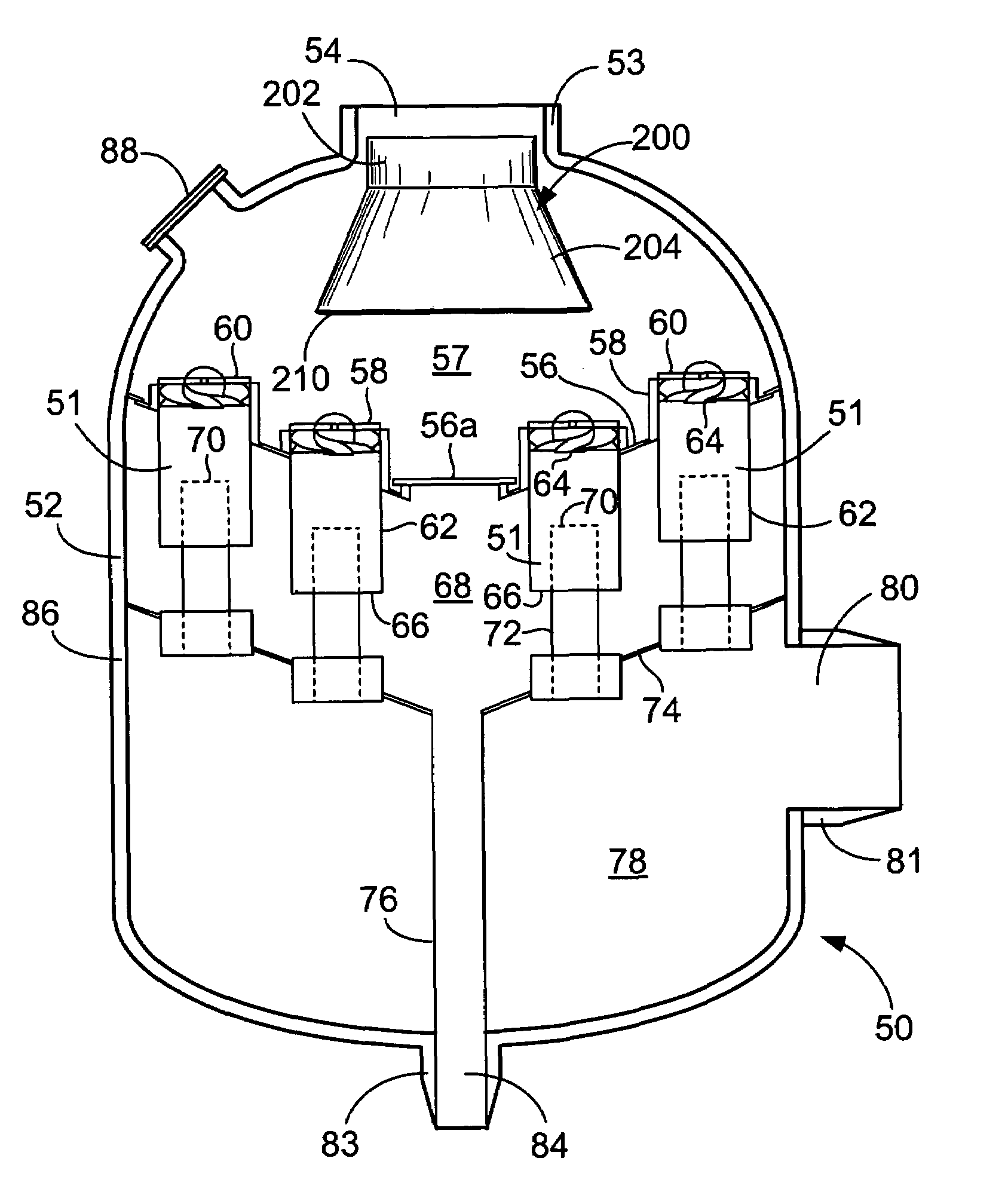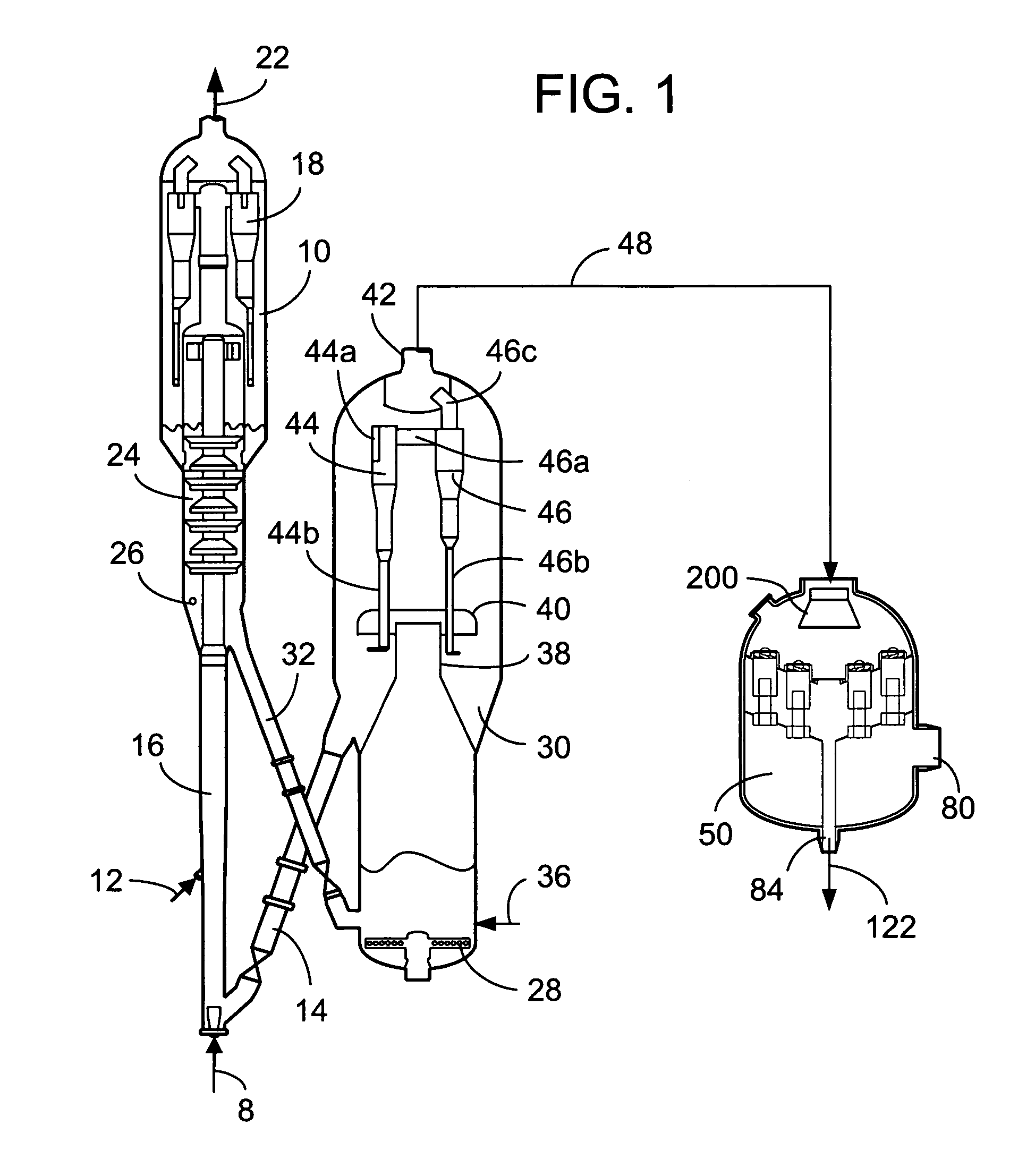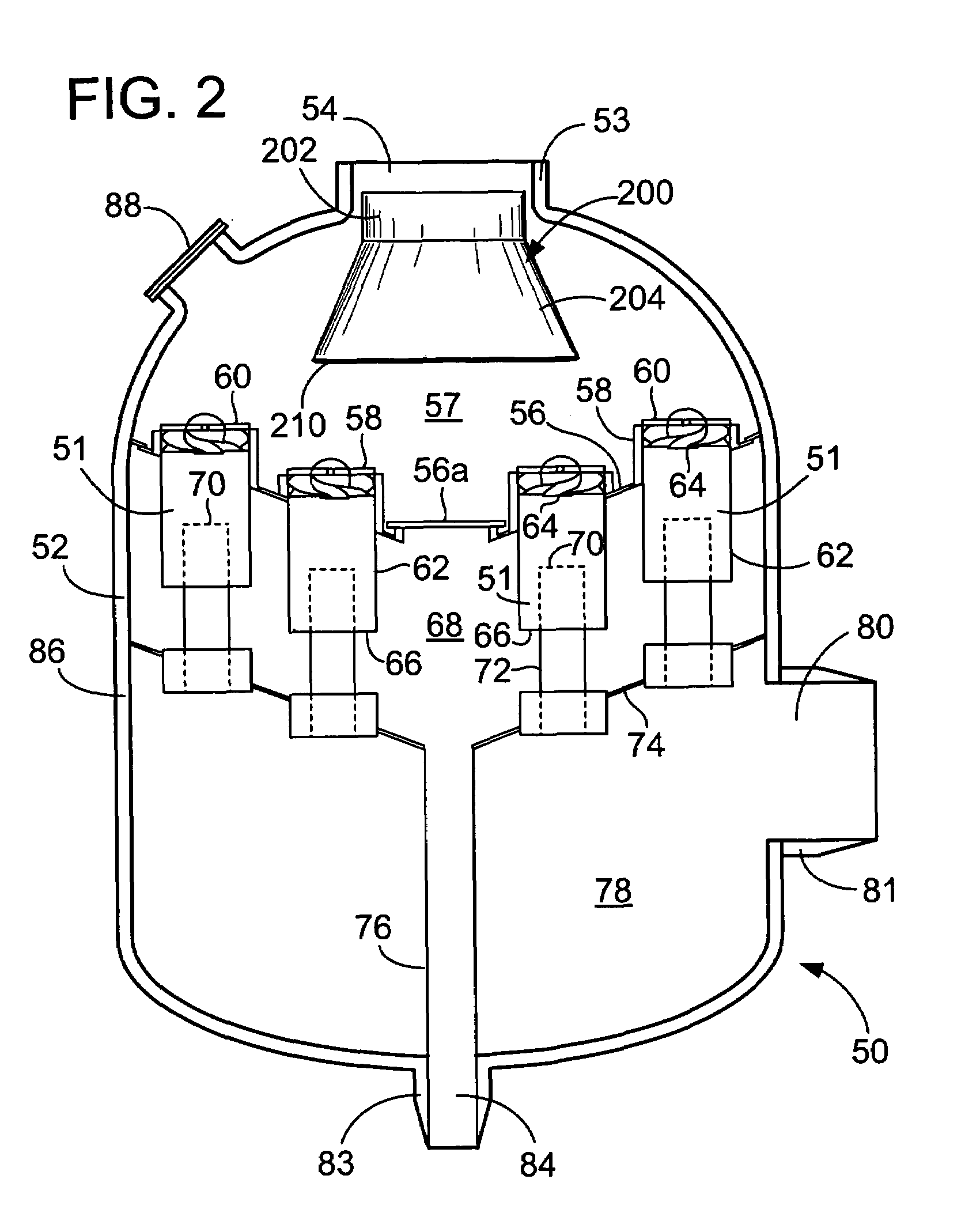Diffuser for separator vessel
a separator vessel and diffuser technology, applied in the direction of auxillary pretreatment, separation process, furnace, etc., can solve the problems of affecting the flow rate of the separator vessel, so as to achieve the effect of improving the flow rate distribution
- Summary
- Abstract
- Description
- Claims
- Application Information
AI Technical Summary
Benefits of technology
Problems solved by technology
Method used
Image
Examples
Embodiment Construction
[0028]The present invention applies to the purification of a broad range of solid-contaminated gas streams, and especially those containing dust particles in the 1 to 20 μm range. A number of commercial gas purification operations meet this description, including the treatment of effluent streams of solid catalyst fluidized bed processes, coal fired heaters, and power plants. Several well-known refinery operations rely on fluidized bed technology, such as a preferred embodiment of the process for converting methanol to olefins (MTO), as described in U.S. Pat. No. 6,137,022, using a solid catalyst composition. Another area of particular interest lies in the purification of FCC effluent streams that contain entrained catalyst particles resulting from attrition, erosion, and / or abrasion under process conditions within the reactor. As mentioned, fluid catalytic cracking (FCC) is a well-known oil refinery operation relied upon in most cases for gasoline production. Process variables typi...
PUM
| Property | Measurement | Unit |
|---|---|---|
| Angle | aaaaa | aaaaa |
| Fraction | aaaaa | aaaaa |
| Fraction | aaaaa | aaaaa |
Abstract
Description
Claims
Application Information
 Login to View More
Login to View More - R&D
- Intellectual Property
- Life Sciences
- Materials
- Tech Scout
- Unparalleled Data Quality
- Higher Quality Content
- 60% Fewer Hallucinations
Browse by: Latest US Patents, China's latest patents, Technical Efficacy Thesaurus, Application Domain, Technology Topic, Popular Technical Reports.
© 2025 PatSnap. All rights reserved.Legal|Privacy policy|Modern Slavery Act Transparency Statement|Sitemap|About US| Contact US: help@patsnap.com



